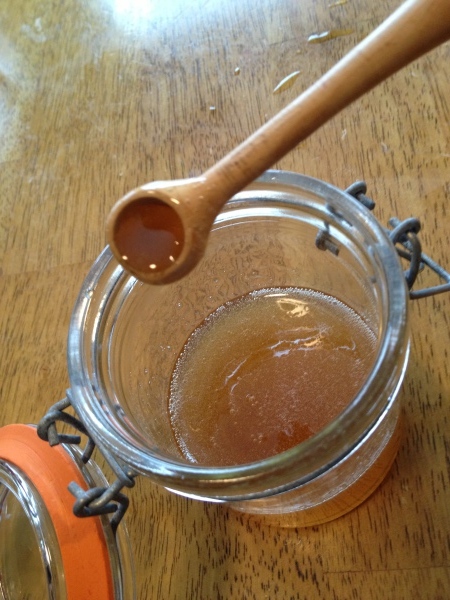In general, honey is available in liquid form, but we can find other honey-related products in the market. They could be obtained through natural means or subsequent processes.
1. Chunk honey:
It’s comb honey with poured liquid honey. It is usually available in mouth-sized shapes.
2. Creamed honey:
It is consisted of 90 percent of liquid honey and one percent of finely granulated honey. The mixture is placed in a container at 57 degrees Celsius until very firm. This produces honey with spreadable consistency and very smooth form. This product is also called honey fondant, churned honey, whipped honey, spun honey and set honey. It usually has multiple small crystals that prevent bigger crystals from forming.
3. Crystalized honey:
Crystallized honey has specific glucose content that can crystallize spontaneously. This product is also called granulated honey or candied honey. It should be noted that it is possible for crystallized honey to change back into the original liquid state.
4. Dried honey:
Dried honey is simply honey with its moisture removed. This results in non-sticky, very solid granules. The method typically uses some form of anti-caking and drying substances. Dried honey can be used as garnish for various desserts.
5. Filtered honey:
It is common honey, that’s filtered of fine particles, pollen grains and even air bubbles. In general, any particle that isn’t honey will be removed. During the process, honey is heated up to 150 degrees Fahrenheit, so it will go through the filter easily. The honey will not crystallize easily and its color is usually quite clear.
6. Honeycomb:
It is pure honey taken directly from the bee hives. This means, we could still get everything from beeswax, dust, pollen and event bee parts. Bee farmers simply cut the honey-rich section of the hive and sell it. They usually use rings or plastic cartridges to speed up the process.
7. Pasteurized honey:
During the pasteurization process, honey is heated until 161 degrees Fahrenheit to liquefy micro-crystals and eradicate yeast cells. This will help to delay the crystallization process. It should be noted that excessive can damage honey and darken the color. Heat may also change flavour and fragrance.
8. Strained honey:
Honey is extracted from the hive and placed on a mesh material. This will only remove larger particles, wax and resin-like material. Consequently, there will be no reduction in nutrients, because pollens, enzymes and minerals are still there.
9. Ultrasonicated honey:
Instead of using thermal procedure, honey is processed using the ultrasonication process to destroy yeast cells and other particles. This prevents yeast cells to proliferate inside honey and the remaining usually loses its ability to grow. The fermentation rate should be reduced significantly. Ultrasonication can prevent crystallization and eliminate existing crystals. Honey will also be at its original state.
10. Kosher honey:
Honey that’s produced processed and packaged based on Jewish dietary law.
11. Organic honey:
Honey that’s produced in fully natural environment, where no pesticide is present in the pollen extraction area.
















